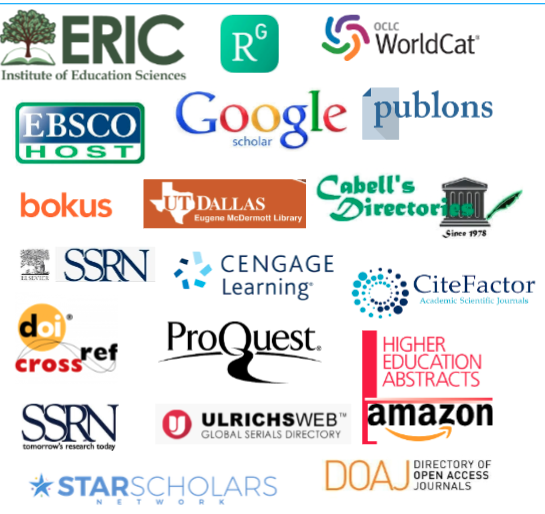Creating Common Ground
A framework for promoting interdisciplinarity
DOI:
https://doi.org/10.32674/jise.vi0.1088Keywords:
application; workshop; faculty developmentAbstract
Growing from an invited workshop on interdisciplinary learning the authors led at their institution’s annual faculty retreat, this manuscript offers a framework for encouraging faculty from diverse disciplines to consider and evaluate their teaching, scholarship, and service in interdisciplinary ways. In this paper, we present an application of a process that integrates Repko’s (2008) suggested criteria for interdisciplinarians, Doran, Miller, and Cunningham’s (1981) conceptualization of S.M.A.R.T. goals, and McCoy and Gardner’s (2012) five key social structural components, in order to further cultivate faculty members' identities as interdisciplinarians. We conclude by summarizing participants’ comments in order to offer concrete examples of how the workshop yielded specific action plans for faculty members’ own interdisciplinarity within their teaching, research, and service activities. Taken together, this process challenges the traditional “silos” of academic work to help faculty reach across disciplinary boundaries. As such, this framework provides a roadmap for faculty and institutions interested in purposefully and meaningfully facilitating interdisciplinarity across a variety of academic settings.
Downloads
References
Boyack, K.W., Klavans, R., & Borner, K. (2005). Mapping the backbone of science. Scientometrics, 64(3), 351-375.
Brint, S. G., Turk-Bicakci, L., Proctor, K., & Murphy, S. P. (2009). Expanding the social frame of knowledge: Interdisciplinary, degree-granting fields in American colleges and universities, 1975–2000. The Review of Higher Education, 32(2), 155-183.
Buttell, F.P., & Devine, J. (2014). Teaching note – Is “interdisciplinary” a bad word for social work doctoral programs? Journal of Social Work Education, 30, 379-384.
Carr, G., Loucks, D. P., & Bloschl, G. (2018). Gaining insight into interdisciplinary research and education programmes: A framework for evaluation. Research Policy, 47(1), 35-48.
Coker, J., & Gatti, E. (2017). Interdisciplinary Capstones for All Students. Journal Of Interdisciplinary Studies In Education, 5(2), 1-10. Retrieved from http://isejournal.org/index.php/jise/article/view/163.
Doran, G. T. (1981). There’s a SMART way to write management’s goals and objectives. Management review, 70(11), 35-36.
Klein, J. T. (2009). Creating interdisciplinary campus cultures: A model for strength and sustainability. John Wiley & Sons.
List, J., Samek, A., & Suskind, D. (2018). Combining behavioral economics and field experiments to reimagine early childhood education. Behavioural Public Policy, 2(1), 1-21. doi:10.1017/bpp.2017.6
McCoy, S., & Gardner. S. (2012). Interdisciplinary collaboration on campus: Five questions. Change, 44(6), 44-49.
Omodei, E., De Domenico, M., & Arenas, A. (2017). Evaluating the impact of interdisciplinary research: A multilayer network approach. Network Science, 5(2), 235-246. doi:10.1017/nws.2016.15
Parish, A.J., Boyack, K.W., & Ioannidis, J.P.A. (2018) Dynamics of co-authorship and productivity across different fields of scientific research. PLoS ONE 13(1): e0189742. https://doi.org/10.1371/journal.pone.0189742.
Pearson, S. Honeywood, S., & O’Toole, M. (2005). Not yet learning for sustainability: The challenge of environmental education in a university. International Research in Geographical & Environmental Education 14(3), 173-186. Retrieved from https://digitalcommons.uri.edu/cgi/viewcontent.cgi?article=1035&context=cba_facpubs.
Repko, A. F. (2008). Interdisciplinary research: Process and theory. Sage.
Thorpe, H., Ryba, T., & Denison, J. (2014). Toward New Conversations Between Sociology and Psychology. Sociology of Sport Journal, 31(2), 131–138. Retrieved from https://doi-org.library3.webster.edu/10.1123/ssj.2013-0109.
White, A., & Miller, C. (2014). Development and delivery of an interdisciplinary course for nursing and office administration. Journal Of Interdisciplinary Studies In Education, 2(2), 59. Retrieved from http://isejournal.org/index.php/jise/article/view/80.
Yemm, G. (2013). Essential Guide to Leading Your Team: How to Set Goals, Measure Performance and Reward Talent. Pearson Education. pp. 37–39.







